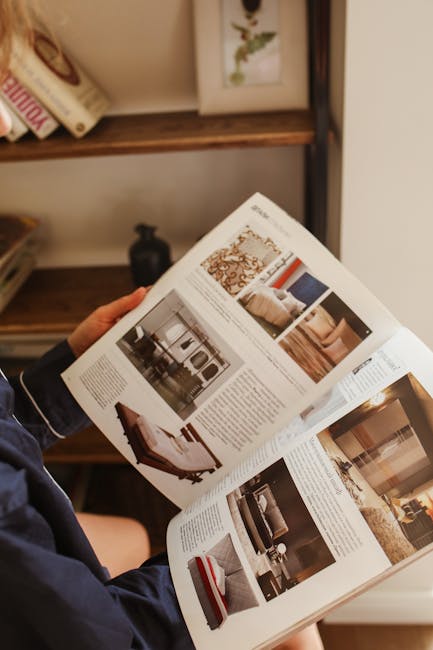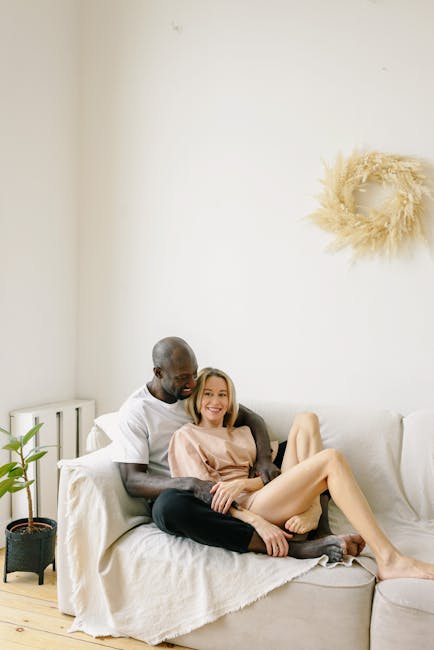Living Room Ideas: Design Inspiration & Decor Tips
Elevating Your Space: Inspiring Living Room Ideas
The living room, often the heart of the home, serves as a sanctuary for relaxation, entertainment, and connection. Designing a living room that is both aesthetically pleasing and functionally efficient requires careful consideration of various elements, including space utilization, color palettes, furniture selection, and personal style. This article explores a range of living room ideas, offering practical examples and expert advice to help you create a space that reflects your unique personality and enhances your daily life.
Understanding Your Needs and Preferences
Before embarking on any design project, it is crucial to assess your individual needs and preferences. Consider the following questions:
- How do you primarily use your living room? Is it mainly for relaxation, entertaining guests, watching television, or a combination of activities?
- What is your preferred style? Do you lean towards modern minimalism, classic elegance, bohemian eclecticism, or rustic charm?
- What is your budget? Establishing a realistic budget will help you prioritize your purchases and avoid overspending.
- What is the size and layout of your living room? The dimensions and configuration of your space will influence your furniture selection and arrangement.
- What is the existing architectural style of your home? Harmonizing your living room design with the overall aesthetic of your home will create a cohesive and visually appealing result.
Answering these questions will provide a solid foundation for your design decisions and ensure that your living room meets your specific requirements.
Exploring Different Design Styles
The possibilities for living room design are virtually limitless. Here are a few popular styles to consider:
- Modern Minimalism: Characterized by clean lines, neutral colors, and a focus on functionality. Furniture is typically sleek and uncluttered, with minimal ornamentation. Natural light is emphasized, and accessories are kept to a minimum.
- Classic Elegance: Embraces timeless sophistication with traditional furniture, rich fabrics, and ornate details. Think plush sofas, antique accents, and warm, inviting color palettes. Symmetry and balance are key elements of this style.
- Bohemian Eclecticism: A vibrant and free-spirited style that celebrates individuality and creativity. Incorporate a mix of textures, patterns, and colors, along with unique decorative items from different cultures and eras.
- Rustic Charm: Evokes a sense of warmth and comfort with natural materials, such as wood, stone, and leather. Furniture is often handcrafted and distressed, and the overall aesthetic is cozy and inviting.
- Coastal Style: Inspired by the sea and sand, this style features light and airy colors, natural textures, and nautical accents. Think white walls, blue hues, and driftwood-inspired furniture.
- Mid-Century Modern: Celebrates the design aesthetic of the 1950s and 1960s with clean lines, organic shapes, and a focus on functionality. Furniture is often made of wood and features tapered legs.
Ultimately, the best design style for your living room is the one that resonates most with your personal taste and lifestyle. Feel free to mix and match elements from different styles to create a unique and personalized space.
Color Palettes and Textures
The color palette you choose for your living room will significantly impact the overall mood and atmosphere. Consider the following:
- Neutral Colors: Offer a versatile and timeless backdrop that can be easily complemented with pops of color. Grays, beiges, and whites are popular choices for creating a calming and sophisticated ambiance.
- Warm Colors: Such as reds, oranges, and yellows, can create a sense of energy and excitement. Use these colors sparingly, as they can be overwhelming in large doses.
- Cool Colors: Such as blues, greens, and purples, can create a sense of tranquility and relaxation. These colors are ideal for creating a serene and inviting living room.
In addition to color, texture plays a vital role in adding depth and visual interest to your living room. Consider incorporating a variety of textures through fabrics, rugs, and decorative accessories. For example, a plush velvet sofa can be paired with a woven jute rug and a knitted throw blanket to create a cozy and inviting space.
Practical Example: Imagine a living room with light gray walls (a neutral base). You could introduce warmth and personality through a burnt orange accent chair, a patterned rug with hints of red and yellow, and textured throw pillows in various shades of gray and orange. This creates a balanced and inviting space.
Furniture Selection and Arrangement
Selecting the right furniture is essential for creating a functional and comfortable living room. Consider the following factors:
- Size and Scale: Choose furniture that is appropriately sized for your space. Avoid overcrowding the room with too much furniture, as this can make it feel cramped and uncomfortable.
- Comfort and Functionality: Prioritize comfort when selecting seating options. Choose sofas and chairs that are supportive and well-cushioned. Consider the functionality of each piece of furniture and how it will contribute to your daily life.
- Style and Design: Select furniture that complements your overall design style. Consider the shape, material, and finish of each piece.
The arrangement of your furniture is equally important. Aim for a layout that promotes conversation and flow. Consider the focal point of your room, such as a fireplace or a large window, and arrange your furniture accordingly. Create distinct zones for different activities, such as a seating area for conversation and a reading nook for relaxation.
Practical Example: In a small living room, opt for a sectional sofa instead of a separate sofa and loveseat. This maximizes seating space without taking up too much floor area. A coffee table with built-in storage can also help to keep the room organized and clutter-free.

(Photo by Polina Tankilevitch on Pexels)
Lighting: Creating the Right Ambiance
Lighting is a crucial element in creating the desired ambiance in your living room. Layering different types of lighting is key to achieving a well-lit and inviting space. Consider the following:
- Ambient Lighting: Provides overall illumination for the room. This can include recessed lighting, chandeliers, or pendant lights.
- Task Lighting: Provides focused light for specific activities, such as reading or working. This can include table lamps, floor lamps, or desk lamps.
- Accent Lighting: Highlights specific features in the room, such as artwork or architectural details. This can include spotlights, track lighting, or wall sconces.
In addition to the type of lighting, consider the color temperature of the light bulbs. Warm light (2700K-3000K) creates a cozy and inviting atmosphere, while cool light (4000K-5000K) is more energizing and suitable for tasks. Dimmers can also be used to adjust the brightness of the lights and create different moods.
Practical Example: Use a combination of recessed lighting for general illumination, a floor lamp next to a comfortable armchair for reading, and accent lighting to highlight a piece of artwork above the fireplace. This creates a well-lit and visually appealing living room.
Accessories and Decorative Elements
Accessories and decorative elements add personality and character to your living room. Consider incorporating the following:
- Artwork: Choose artwork that reflects your personal taste and complements your overall design style.
- Rugs: Add warmth and texture to the floor with a stylish rug.
- Throw Pillows and Blankets: Provide comfort and add pops of color and texture to your seating area.
- Plants: Bring life and freshness into the room with indoor plants.
- Books and Magazines: Add a touch of intellectual charm with a curated collection of books and magazines.
- Personal Items: Display personal items, such as photographs, souvenirs, and collectibles, to make the space feel more personal and inviting.
When choosing accessories, consider the scale and proportion of the room. Avoid overcrowding the space with too many items. Less is often more when it comes to decorative elements. Choose a few carefully selected pieces that will make a statement and enhance the overall aesthetic of your living room.

(Photo by Ksenia Chernaya on Pexels)
Maximizing Space in Small Living Rooms
Designing a small living room can be challenging, but with careful planning and clever design solutions, you can create a space that is both functional and stylish. Consider the following tips:
- Choose Multifunctional Furniture: Opt for furniture that serves multiple purposes, such as a sofa bed for guests or a coffee table with built-in storage.
- Use Vertical Space: Maximize vertical space by installing shelves or cabinets that reach the ceiling.
- Hang Mirrors: Mirrors can create the illusion of more space by reflecting light and visually expanding the room.
- Keep it Simple: Avoid clutter and keep the décor minimal. A few well-chosen accessories will have a greater impact than a room full of knick-knacks.
- Use Light Colors: Light colors tend to make a room feel larger and more airy.
Practical Example: In a small apartment living room, a wall-mounted TV can save valuable floor space. A floating shelf above the TV can be used to display decorative items and books, further maximizing vertical space. A light-colored rug can visually expand the room, while a few strategically placed mirrors can reflect light and create the illusion of more space.
Sustainable and Eco-Friendly Design
Consider incorporating sustainable and eco-friendly elements into your living room design. This not only benefits the environment but also creates a healthier and more comfortable living space. Consider the following:
- Choose Sustainable Materials: Opt for furniture made from sustainable materials, such as bamboo, reclaimed wood, or recycled plastic.
- Use Low-VOC Paints: Low-VOC (volatile organic compounds) paints are better for indoor air quality.
- Incorporate Natural Light: Maximize natural light by using sheer curtains or blinds.
- Choose Energy-Efficient Lighting: Use LED light bulbs, which are more energy-efficient than traditional incandescent bulbs.
- Add Indoor Plants: Indoor plants can help to purify the air and create a more relaxing atmosphere.
Practical Example: Choose a sofa upholstered in organic cotton fabric and filled with recycled materials. Use reclaimed wood for a coffee table or shelving unit. Incorporate plenty of indoor plants to purify the air and add a touch of nature to your living room.
Conclusion
Designing a living room that is both beautiful and functional requires careful planning and attention to detail. By considering your needs and preferences, exploring different design styles, and incorporating practical examples and expert advice, you can create a space that reflects your unique personality and enhances your daily life. Remember to prioritize comfort, functionality, and sustainability when making your design decisions. With a little creativity and effort, you can transform your living room into a sanctuary that you and your loved ones will enjoy for years to come.
